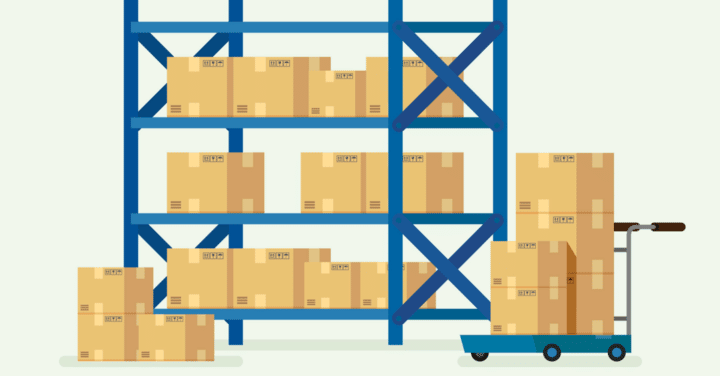Across the nation, current consumer demands have pushed shippers and retailers to up their last-mile delivery game. So how are companies responding? CB Insights reports, “Amazon has spent billions of dollars building out its shipping infrastructure, including operating 175+ fulfillment centers worldwide and investing $1.5B to build an air hub in Kentucky. On the other hand, Walmart relies on its existing footprint across 5000+ US stores to help deliver online orders faster. To compete with the formidable logistics infrastructure these giants are building, smaller retailers are turning to micro-fulfillment.” A microfulfillment center, also called MFC, is a small, localized distribution center utilized for e-commerce and local store pickups. The innovative design of the MFC often leverages automation to maximize efficiency within an existing store or dedicated warehouse under 10,000 square feet.
How Microfulfillment Centers Improve E-Commerce Shipping Through Faster and More Reliable Services
While many present factors have disrupted the supply chain, some of today’s supply chain struggles are still chain reactions to events in the past. Whether it was the e-commerce boom of 2019, COVID-19-induced labor shortages, overloaded California ports, or the six-day slowdown from the blocked Suez Canal, the truth is that disruptions are the most regular part of the supply chain. Microfulfillment centers allow delayed freight to get back on schedule by spreading products to localized areas, reducing the backlog at large, high-volume distribution hubs.
Microfulfillment has been a last-mile delivery solution for retail and small-to-medium-sized e-commerce shipper. By avoiding the rigid, traditional nature of large warehouses, these shippers succeed with smaller locations that can be customized to specific product needs, such as garments on hangers. By tying these customization options with the automated capabilities of most microfulfillment centers, shippers and retailers can experience warehouse efficiency to further focus on their final mile capacity procurement.
Speed, Flexibility, Scalability- The Key to Microfulfillment Center Success
Supply chain professionals understand that the current market has a parcel delivery problem. Traditional fulfillment centers have been unable to keep up with consumer demand that insists on delivery as fast as possible, leaving retailers searching for faster fulfillment options. Amidst the current state of last-mile delivery, microfulfillment centers provide a successful distribution system marked by the agility needed to shift resources based on changes in item popularity. When utilizing automated warehouse technologies and efficient space utilization, retailers can better track inventory levels in the face of promotions or product launches without having to pay for useless space when the surge is over. Microfulfillment offers shippers an expedited experience for fast-moving SKUs that can be continued through multimodal optimization.
Enjoy the Benefits of Improved Omnimodal Transportation and Logistics With Microfulfillment Centers
By streamlining the warehouse and distribution experience down to microfulfillment, e-commerce shippers gain access to a system designed for their market. By leveraging a smaller location with more flexible pickup and dock options, retailers can enjoy the benefits of:
- Faster Order Picking – With a microfulfillment transportation and logistics dashboard, e-commerce shippers have better access to get items off the shelves as soon as orders arrive.
- Faster Order Delivery – While last-mile KPIs have been crucial for some time, a microfulfillment center in a densely populated area makes faster deliveries more economical.
- Lower Operating Costs – By utilizing a smaller distribution space, retailers and shippers can keep the logistics KPIs surrounding operating costs down to a minimum amidst increasing inflation.
- Increased Product Access – In a market where everything is time-sensitive, microfulfillment enables shippers to keep inventory closer to their end customers.
- Improved Workplace Safety – By decreasing the warehouse size, team members are closer to each other in the event of an emergency, keeping safety logistics KPIs at ideal levels.
- More Reliable Tracking Options – Real-time visibility is easier to manage within the microsized transportation and logistics dashboard developed for e-commerce.
Unlock the Potential of Microfulfillment Services Today With Guidance From Industry Experts
In today’s economy, everyone is searching for the answer to streamline and lower operational costs. Microfulfillment does that through its efficient space management maximized through automation and flexible customization for omnimodal fulfillment. OneRail’s network provides coast-to-coast access to over nine million drivers, courier entities, and logistics companies to expedite your microfulfillment center’s last-mile delivery. To learn more about how their network and expertise can unlock your business potential, request a demo from OneRail today.


